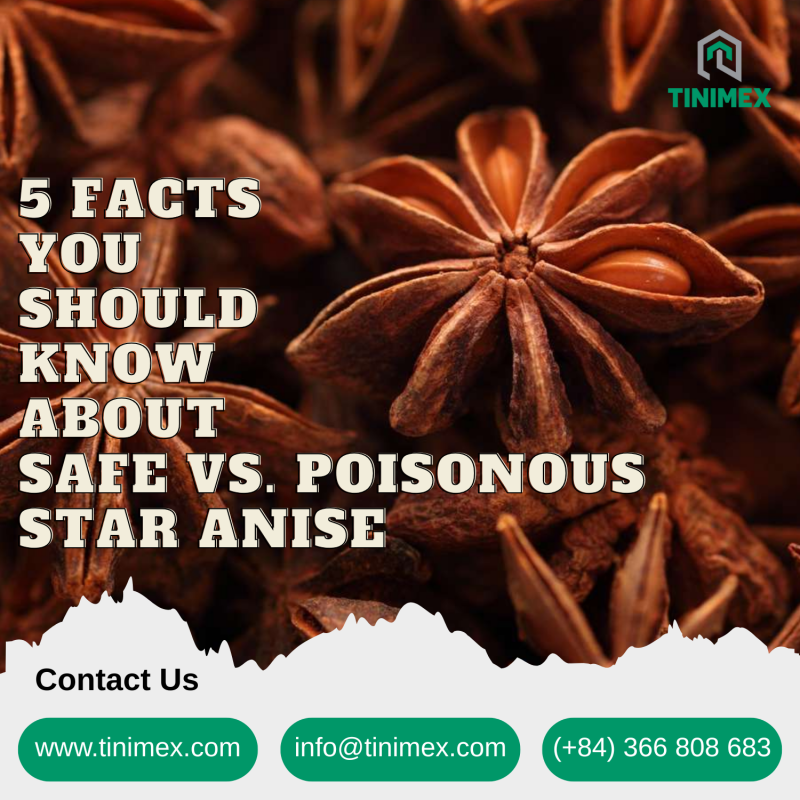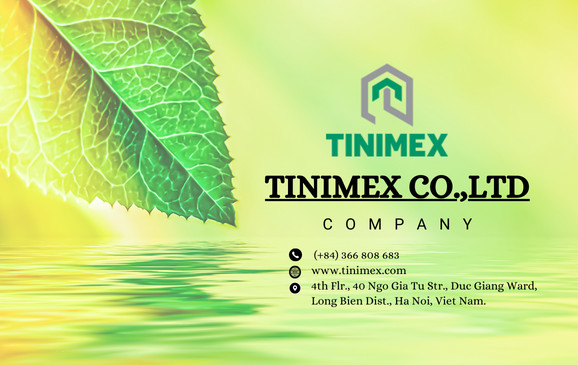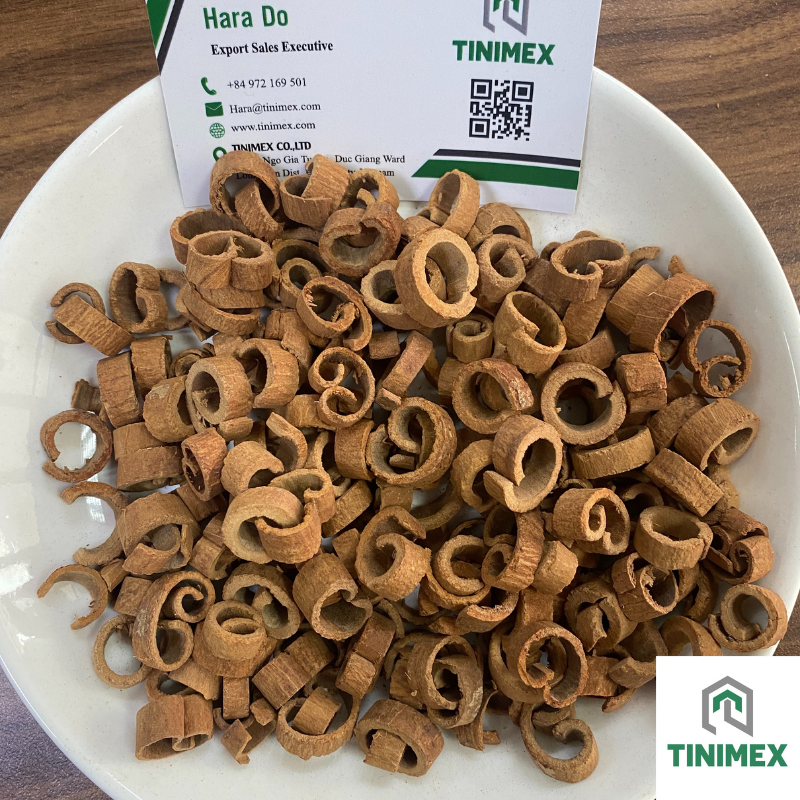Star Anise: 5 Facts About Safe vs. Poisonous
Conclusion: Awareness About Star Anise Is the Most Effective Safeguard
As Illicium Verum continues to enrich global cuisine and underpin important pharmaceutical developments, it is imperative to remain vigilant about the risks posed by its toxic counterpart, Illicium Anisatum. Though both share a similar star-shaped appearance and aromatic scent, their internal compositions lead to vastly different outcomes—one healing, the other harmful. Accurate botanical identification is not just a technical necessity but a public health imperative. Regulatory vigilance, reinforced by rigorous quality control and advanced testing, ensures that only safe, edible star anise enters the food and medicinal supply chains.
Moreover, consumers, healthcare professionals, and industry stakeholders must remain informed about these differences. The importance of proper sourcing, clear labeling, and purchasing from reputable suppliers cannot be overstated, particularly as interest in herbal products and natural remedies continues to rise. Understanding these five must-know facts doesn’t just help prevent accidental poisoning—it empowers people to make responsible, health-conscious decisions in the kitchen, the apothecary, and beyond.
In a marketplace where visual similarities can obscure dangerous distinctions, knowledge remains the strongest defense. Let this serve as a reminder: star anise can be a gift of nature—but only when used with discernment, scientific oversight, and respect for its dual potential.

1. Botanical Identity: Similar Looks, Different Lineage
At first glance, both Illicium Verum and Illicium Anisatum share a strikingly similar appearance. Each features the characteristic star-shaped pod—usually composed of eight points or carpels—that house shiny brown seeds. These pods emit a strong, sweet, and slightly spicy fragrance that makes them desirable in culinary and medicinal contexts. However, the visual resemblance masks critical botanical differences.
- Illicium Verum: This species is a member of the Schisandraceae family and is native to the subtropical regions of southern China and northern Vietnam. It thrives in warm, humid environments and is widely cultivated for its edible and medicinal qualities. Illicium Verum has been used for centuries in traditional Chinese medicine and is an essential spice in many Asian cuisines. Its production is now highly industrialized, with stringent quality control practices to meet global demand, particularly in the food and pharmaceutical industries.
- Illicium Anisatum: Also known as Illicium Anisatum or “shikimi” in Japanese, this species is native to Japan. Although it belongs to the same genus (Illicium), it is a distinct species with significantly different chemical properties. Unlike its edible counterpart, Japanese star anise contains toxic compounds such as anisatin and is unsuitable for internal use. In Japan, it is traditionally used in religious ceremonies and as incense, not as a food product.
Despite these differences, the resemblance between the two species is so strong that misidentification remains a serious concern. This is especially true when the spice is imported in bulk or processed into ground or powdered form, where visual inspection is nearly impossible. The consequences of such confusion can be severe, as ingestion of Illicium anisatum can lead to poisoning. Therefore, accurate botanical identification and strict quality assurance protocols are essential at every stage of the supply chain.
2. Toxicity Illicium Anisatum: A Hidden Threat
Illicium Anisatum, commonly known as Japanese star anise, poses a significant health risk due to its content of potent neurotoxins, including anisatin, shikimin, and safrole. Even in small quantities, ingestion of these compounds can lead to severe adverse effects. Documented symptoms of poisoning include:
- Seizures
- Hallucinations
- Nausea and vomiting
- Tachycardia (rapid heart rate)
- Neurological dysfunction
These toxic effects can manifest quickly and may require immediate medical attention. Due to its high toxicity, Japanese star anise is prohibited for use in foods, herbal teas, and dietary supplements in many countries. Its use is strictly limited to non-edible applications, such as in incense, potpourri, and ornamental decorations.
3. Pharmaceutical Value of Illicium Verum
Illicium Verum, commonly known as Illicium Anisatum, holds significant value in both traditional and modern medicine. It is most notably recognized as the primary natural source of shikimic acid, a critical precursor in the synthesis of the antiviral drug oseltamivir phosphate (Tamiflu).
In addition to its role in pharmaceutical manufacturing, Illicium Verum offers several other health benefits, including:
- Digestive support – Traditionally used to alleviate bloating, indigestion, and gas.
- Antimicrobial activity – Demonstrates effectiveness against certain bacteria and fungi.
- Anti-inflammatory properties – Contains bioactive compounds that help reduce inflammation.
- Respiratory treatment – Used in natural remedies for coughs and bronchial conditions.
Furthermore, its essential oils are widely incorporated into aromatherapy and personal care products due to their soothing and antimicrobial qualities.
Regulatory authorities such as the U.S. Food and Drug Administration (FDA) and the European Medicines Agency (EMA) generally recognize true star anise as safe when correctly identified and used appropriately.
4. Visual and Chemical Differentiation
Despite their nearly identical appearance, distinguishing safe star anise (Illicium verum) from the toxic star anise (Illicium anisatum) is challenging without specialized equipment. However, several distinguishing characteristics can aid in identification:
- Odor: Illicium Anisatum emits a more pungent, medicinal scent, whereas Illicium Verum has a milder, sweet-licorice aroma.
- Taste: Illicium Anisatum possesses a bitter and acrid flavor, unlike the sweet and aromatic taste of true star anise.
- Microscopic structure: When examined under a microscope, distinct structural differences in the seeds and pericarp (fruit wall) become evident.
- Chemical analysis: Techniques such as gas chromatography (GC) and thin-layer chromatography (TLC) are employed to detect toxic compounds (e.g., anisatin) present in Illicium Anisatum.
Given the toxic nature of Illicium Anisatum, it is essential that suppliers and manufacturers perform rigorous quality control and chemical testing to ensure accurate identification and product safety.
5. Regulatory Standards and Safe Sourcing
- The U.S. FDA warning against consumption of teas containing Japanese star anise.
- The European Medicines Agency (EMA) requiring validated quality control methods.
- Import controls and safety checks in countries with high consumption of herbal products.
To ensure safe sourcing, manufacturers and exporters must:
- Obtain from certified suppliers with proper botanical verification.
- Use only whole, clearly labeled star anise pods.
- Conduct laboratory testing, especially for ground or processed forms.
Consumers should also be cautious, especially when purchasing from unverified online sellers or informal markets.
Conclusion: Awareness is the Best Protection
As star anise continues to serve as a beloved spice in global kitchens and a crucial botanical in the pharmaceutical world, the presence of its toxic cousin, Illicium Anisatum, remains a cause for serious concern. The visual similarities between the two varieties underscore the importance of vigilant identification and strict quality assurance. With growing reliance on natural products in food, health, and wellness industries, ensuring authenticity is more vital than ever.
Regulatory oversight, supplier transparency, and consumer education play essential roles in maintaining safety. By knowing how to distinguish between edible and toxic varieties, individuals and professionals alike can confidently embrace the benefits of true star anise without jeopardizing health. Understanding these five essential facts fosters not only safety but also empowers informed decisions—from culinary experimentation and holistic remedies to industrial production. Informed awareness is, and will remain, the most effective shield against unintended exposure to harmful substitutes.
Our contact:
Dc: 4th Flr., 40 Ngo Gia Tu Str., Duc Giang Ward, Long Bien Dist., Ha Noi, Viet Nam
Hotline: (+84) 366 808 683
Mail: info@tinimex.com
Website: www.tinimex.com



